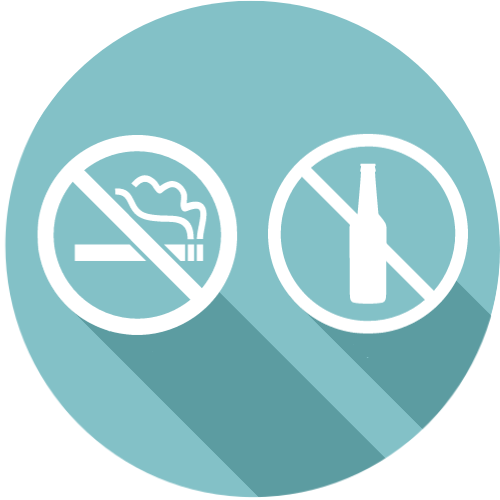What are the most effective nudges against alcohol, tobacco, and other unhealthy temptations?
Relevant topics Archive, Strategy
“Giving up smoking is the easiest thing in the world” the words of Mark Twain, an American writer in the late 1800s. “I know because I've done it thousands of times.” In the present day, it’s crystal clear that smoking and alcohol consumption is a great health risk, but still, it’s very difficult for people to quit or decrease their consumption of these indulgence.
The motto “Prevention is better than cure” (Dutch philosopher Desiderius Erasmus) has motivated scientists around the world to look into ways to help people live healthier lives and avert diseases. Moreover, more and more companies are becoming socially responsible and looking into ways to promote healthy purchase decisions.
But how to do that?
Don’t push too hard
As you may know or experience yourself, rules for a healthy life are not easily imposed on people. They are attached to their freedom of choice and don’t want any mingling from scientists, marketeers, or politicians in their decision-making. That’s why researchers have been looking into more subtle ways to help make more healthful choices.
Since you’re a neuromarketing fanatic, you probably already know some of these techniques. An important one often used in the context of health promotion is nudging, which is an adjustment in the (choice) environment, designed to probe behavioral change (as intended by the designer). This nudge is only a small reminder, not even a push, of more desirable behavior and has been proven successfully in several contexts, for example in reducing food waste.
In the past, as Nurchis et al. (2023) show, three types of nudging have been applied for the prevention of alcohol and tobacco consumption: 1) increasing salience of information or incentives, 2) providing feedback, and 3) changing the default choice. In the following paragraphs each of them is evaluated with the context of alcohol and smoking cessation.
Increasing salience information or incentives
Drawing more attention towards information or motivational incentives within the choice environment is the easiest and therefore the most frequently applied nudge within this context. Especially for smoking, nasty pictures of possible health effects have been printed on the packaging and, thus, have been evaluated quite extensively. Most studies showed this type of nudge to be successful. Also for alcohol consumption, several studies showed that image and text warning labels discourage its consumption.
Interestingly, the informational nudge does not increase beliefs about disease risk, but the pictorial warnings do increase thinking about the risks of smoking, elicit fear, and negative affect which can motivate smokers to quit (Noar et al., 2020).
Moreover, this implementation could also be applied to other types of unhealthy behavior, such as to reduce sugary drink purchases: Hall et al. (2022) showed that pictorial warnings about type 2 diabetes and heart damage reduced parents' purchases of sugary drinks for their children.
Providing feedback
Another type of nudge frequently investigated is more of a learning strategy. In this case, information is only provided to individuals on the consequences of their behavior, not before they even make a choice. Thereby, timing is key, as it’s important that the consumer is able to link the feedback to their performed behavior.
From the evidence provided by Nurchis et al. (2023), feedback is most successful in mitigating behavior change when it’s combined with the information nudge presented above. And this makes sense: how would you feel getting a grade when you didn’t even know you were taking an exam?
Changing the default choice
The default nudge is a very common one to apply, for example in vegetarian menu choices, retirement contracts, or organ donation programs. I mean, would you take the effort to change when someone has already provided you with a choice? In most cases, you probably won’t. That’s what makes this nudge a strong and easy one to implement: it simply puts the choice setting along the path of least resistance, making the healthiest choice also the easiest one.
For alcohol consumption, the availability of nonalcoholic beverages as an alternative reduced alcohol demand (Martinetti et al., 2019), however, for smoking cessations, the alternative of e-cigarettes was not effective in preventing nicotine relapsing.
Before you start cheering…
Keep in mind that when reporting success rates of nudging and other intervention types, there’s a risk of publication bias where only the successful cases are published.
Moreover, nudging is an adjustment in the environment, and most nudges show strong habituation: the attention to them gradually diminishes after repeated exposure. It’s therefore relevant to keep them dynamically changing in order to maintain good behavior.
There are also other constraints to when this type of intervention works. For example, the internal state of the user may be a factor as well: in a study we published earlier, a healthier option on the left was chosen more often than a healthy option on the right side, but only when people were hungry.
Take aways
- Increasing salience information or incentives is the most investigated nudge in the application of reducing alcohol and tobacco consumption, and also seems the most effective one.
- Providing feedback is only effective in combination with information about why/how the individual is expected to behave.
- Offering alternatives may work for non-addicted users but does not prevent relapse.
- All these solutions need further investigation and suffer from limitations often found in nudging studies.

